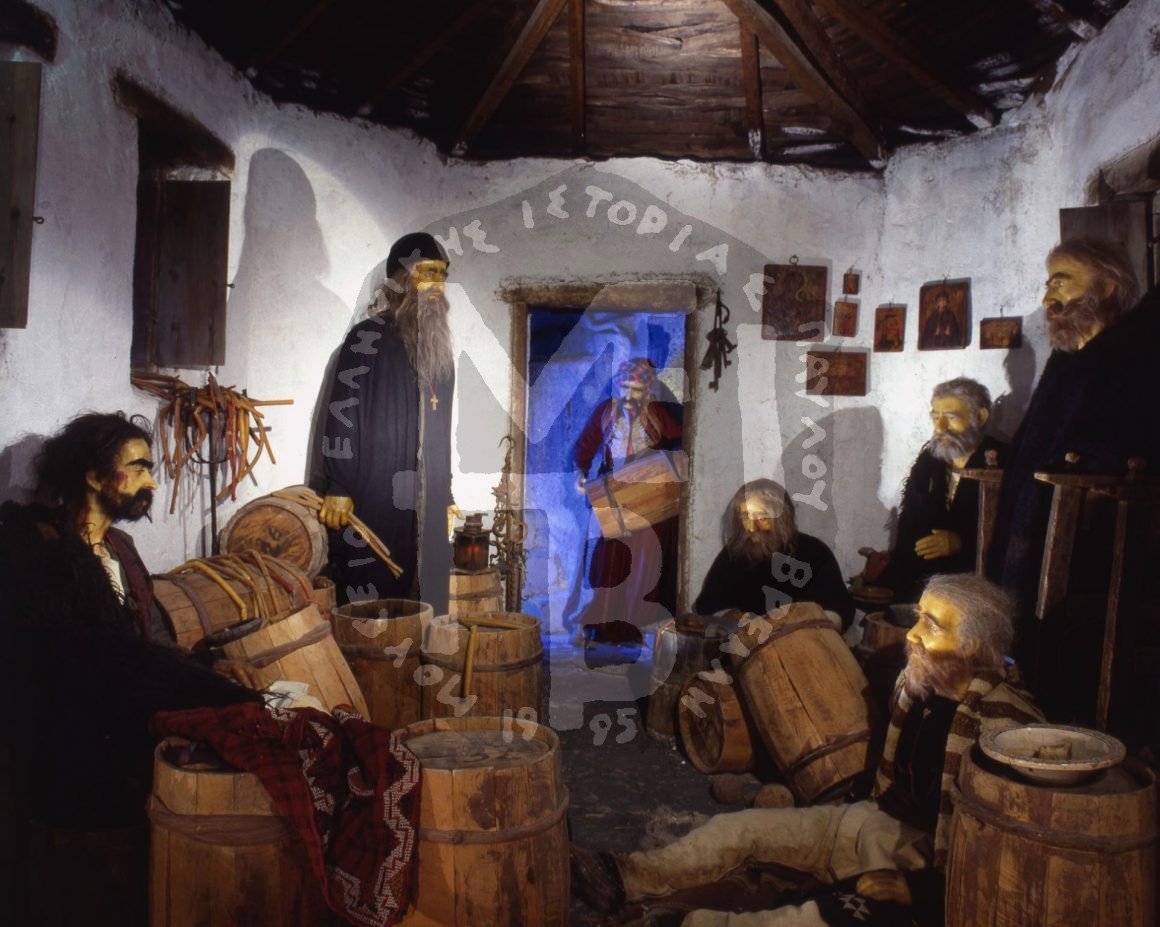“On the southeast of Paramithia, on a rocky place, Souli villages were built – Souli, Kiafa, Samoniva and Avaricos. In the west of Samoniva, lies the Kouggi rock.
The people there bore a great resemblance to the Spartans in terms of strength, stamina and war virtue. It was there the blowing up, the holocaust took place by the monk living a secular life, Samuel, in December, 1803. The people there had defeated Ali-pasha on a number of occasions. This one was the last one, since they could no longer bear hunger, thirst and hardship. A treaty followed while the Turk-Albanians had suffered severe casualties and Souli people had started to grow weaker. The latter were divided in three groups about to leave the place without being hurt as it had been agreed. Ali-pasha, though, didn’t keep his word and sent an army to exterminate all three groups.
The first one defending itself, got to Parga. The second one was surrounded in Zaloggo, in the southeast of Souli. In order to spare themselves from slavery, 60 women first threw their children of the cliff and then they fell down too. Finally, some 250 got rescued and managed to reach Parga. The third one was cut off at Seltsos Monastery, at the bank of the River Acheloos. They endured about three months but eventually they couldn’t help it and attempted to get away; it was on April 20, 1804. Only some of the women and children -among them Marc Botsaris, 13 at the time, survived.
Monk Samuel and five more men, old and severely wounded, had stayed behind in Souli to hand over the gunpowder which was inside St Paraskevi church. At the end of the handing over, a Turk-Albanian asked Samuel –as Perevos quotes– ‘How much torture do you think the Vizier will put you to when he lays a hold on you and from whom you cannot get away? Samuel responded: ‘the Vizier is not capable of catching a man, who apart from knowing no fear, knows another path, that of death…’ and at that moment he spread out his hand holding lit candles and set fire on the spilt gunpowder; everyone was blown up.
We turn left on the prisons corridor and we go up. We see rocks gaping menacingly over our heads. On our left and high up we see the church of st Paraskevi being supported on parallel limestone layers. On the exterior there are two little single arched windows and a stone arched door. I tried to build and hew the arch on one-piece stone. As we climb up the large landing makes a pause which enables the visitor to observe what interests them.
In 1957, I was in Souli and Kouggi where I copied, drew and photographed deserted houses, churches and embrasures. I was particularly interested in St Paraskevi church. I studied every detail of the ruins I needed.
Years afterwards when the road was made I visited the place many times. In the beginning of March when the festivities of Souli are held, as a pilgrim, I used to take my family there, as I wanted them to know the place.
In1962, the site of St Paraskevi was excavated and lots of items of that period saw the light. Half destroyed they are kept in a house-museum in Souli. After the excavations, the church got rebuilt.
Here is the back side of the church with the melting pot; a man is sitting down while another is leaning. The open wooden door opposite, where a Turk-Albanian is standing at holding a barrel, leads to the basement. I used various patinas and ways to color the new pieces of wood and the big ones aimed as shutters in order to achieve the right atmosphere. The icons, small and big, were made of wood and glued paper with patina so as to look old.
The few pews are from Kostaniani village, in Dodoni area which I found thrown away and rotten in the grass outside an old church. They fitted the period I wanted them from. The barrels are from pine tree, bound with branches of wild vine and colored accordingly.
Samuel’s powerful face, whose posture and determination dominate, was made with the help of descriptions in books and especially in ‘Parallel lives’ by Anastasios Goudas (1816-1882). An eminent doctor, he engaged himself in biographies of Greeks who prepared the nation’s independence. He had met many of them in person. He mentions many of Samuel’s facial characteristics like the color of his eyes, beard, gaze etc.
The composition is product of my imagination. The monk, after the argument, looks determined to set the barrel with the gunpowder on fire. Helpless old men along with a wounded young one complete the composition.
It is winter and their clothes, shepherds’ cloaks, and several other little items match the season of the year; so do the age of each one which I learnt from friends and relatives.
Their mental states of mind were studied both in terms of physiognomy and character for each one of them. So were their positions and postures. They were all imposing, fine men in life and death.”

